-
Junior Member
registered user
Debian vs Slackware vs Redhat?
This is another noob question...
i googled it but did not find any website speaking in noob terms and short facts and definitions..
So ... here are the few questions :
1) Are Debian, Slackware and redhat, like the 3 main base of the different kinds of linux?
2) What are the main differences between them.?
3) As a noob, then average user and finaly the pro... how should i order them?
4) If 2 different Linux distros are based in the same "code base?", lets say Debian... and both of them work with KDE GUI interface... then what is the difference between them?... the software package that come installed on each one?.. or what?
5) If debian, redhat, and Slackware have their own cds to install the system... then why should i install another distro that is based on any of these? Lets put it like this: What is the difference between installing Debian using the cds available from debian.org and installing the cds from knoppix.com ??
Thanks for your replies and good luck!!
Axo
-
Senior Member
registered user
1) Are Debian, Slackware and redhat, like the 3 main base of the different kinds of linux?
Generally speaking, yes you are almost correct. I would consider the packaging system to be the qualifier.
Practically every Linux system uses a concept of a software package management system. This manager keeps a log of all the programs installed on your system, keeps a listing of all programs NOT installed on your system, and easily identifies upgradable programs. This sounds similar to windowsupdate.microsoft.com but it way wider in scope (not just MS programs). A linux user MUST be familiar with the package manager in order to install software. There are usually two methods of manipulating the package system: either by command line or by a GUI utility. Unless you need to install, remove, & update loads of programs at once, the command line utility is usually quicker but obviously not as friendly. So in knoppix you want to install a DOS emulator so you can play an old DOS game. A Google search for: DOS program run on linux. One of the links is to DOSBox - A DOS Emulator http://users.netwit.net.au/~pursang/dosbox.html. So then I go to http://packages.debian.org and search for DOSbox under ANY and I discover that it is in the Debian package management system. So to install DOSBox on Knoppix 3.8.x (assuming the network is properly configured & the machine can access the internet) is as simple running two commands:
Code:
sudo apt-get update
sudo apt-get install dosbox
The first commands refreshes the lastest package info from the package servers. Then second command tells the system to install dosbox. It will download, decompress, and setup it up for you. The total download size start to finish is about 10MB.
If this is too much command line mumbo-jumbo, then I agree. That is why GUI tools were made to allow easy access to the package management system. Run the program synaptic or kpackage. Do a FIND or CTRL-F. Type dosbox. It will find the package. Click apply and it will download, decompress, and set it up for you. Once you understand that software installation in Linux is different, then you will realize that it is frequently just as simple as windows.
Package system types
RPM - Redhat Package Manager:
Redhat/Fedora, Suse, Mandrake (now Mandriva), & others
DEB - Debian Package format:
Debian & Debian based distros (knoppix, Linspire, Ubuntu & others)
TGZ - Tar GZipped archive:
Slackware & slackware based distros, & others
Source Code:
Gentoo, Sorceror, LFS, & others
2) What are the main differences between them.?
All those types of package management have their own method of installing & maintaining software packages. Since they all use the same set of packages (KDE, Gnome, media players, email programs, etc.) & thus seem very similar, the distros can be separated by some categories. Things like ease of use, target audience (real noob, average user, IT worker, Linux/Unix guru), support (free? email? forums? paid? telephone?), value added programs are all ways of making a distro unique.
3) As a noob, then average user and finaly the pro... how should i order them?
The easiest & quickist way to rank them would be to check out each distros website. Some of the time it will out right tell you if it is for a newbie or for an expert. But another way to figure it out is to check the About, FAQs, & marketing style materials found on the site. From its website, a distro like Linspire is super easy to figure out that it's target audience is noobs & average users & not experts. Slackware's website looks wildly different from Linspire's & shouldbe clue that it is for experts.
4) If 2 different Linux distros are based in the same "code base?", lets say Debian... and both of them work with KDE GUI interface... then what is the difference between them?... the software package that come installed on each one?.. or what?
Support could be a big differnnce. Some distros are well supported with paid support available while others only have a email mailing list. Value add things like custom GUI icons, wallpapers, preconfigured multimedia application are another way to make a difference. As for Debian distros, support & community are 2 big differences. Mepis, a Debian distro, has a large set of documents, guides, faqs, forums & user support websites. But Mepis does not do much if any customizing to their software packages. Ubuntu, Debian distro, is backed by Canonical a comercial company. They too have a large community support forums & help documents but the company has hired & pays employees to streamline & customize the Debian software to give it maximum ease of use & support.
5) If debian, redhat, and Slackware have their own cds to install the system... then why should i install another distro that is based on any of these?
Again, things like support, value add customizations, target audience, target hardware, etc. If you haven't already, then visit distrowatch.com & read about each distro. Then read the reviews of each distro.
Lets put it like this: What is the difference between installing Debian using the cds available from debian.org and installing the cds from knoppix.com ??
A car is not designed for a good night of sleep. You can sleep in a car but unless you are dead tired, it is something that probably should not be done. Knoppix is not designed to be installed to the hard drive. It is designed to be a bootable CD. Sure it CAN be installed to the HD but it unless you are very experienced, it is something that should not be done. or in other words, a hammer is a good hammer but make a poor knife.
If you want a Debian based live CD use Knoppix. If you want to install Debian use Debian. If you want a user-oriented desktop PC (not server) Debian based distro use Ubuntu. If you want a real noob friendly desktop Debian based distro & are willing to pay a small yearly price for support & software updates use Linspire.
-
Junior Member
registered user
Thank you a lot Underscore...
now i get a much better idea ... you are an eminence 
-
while were on the subject of debian, i actually just installed the knoppix to my hard drive. i tried alot of different ones (red hat, suse, ubuntu justto name a few) and i found that only 2 would mount my windows drives automatically, suse and knoppix. in ubuntu i had to go in and modify my fstab file. the knoppix just seems to find anythin i plug into it, including my two digital cameras and my camcorder as well as my usb jump drives. i am still a relative noob to linux all together but i think that knoppix is going to be a good learning tool. as well as educating experience for me. just my 2 cents worth.
Similar Threads
-
Replies: 0
Last Post: 10-15-2005, 10:48 PM
-
By thejackal13 in forum Hardware & Booting
Replies: 10
Last Post: 09-21-2005, 12:30 AM
-
By Garibaldi in forum Klik
Replies: 10
Last Post: 05-29-2005, 08:51 AM
-
By neomorph in forum Hdd Install / Debian / Apt
Replies: 2
Last Post: 10-13-2004, 11:09 AM
-
By digitaldeity in forum General Support
Replies: 1
Last Post: 08-17-2003, 06:16 AM
 Posting Permissions
Posting Permissions
- You may not post new threads
- You may not post replies
- You may not post attachments
- You may not edit your posts
-
Forum Rules

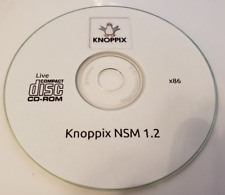
Knoppix NSM 1.2
$8.50
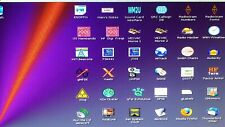
Hamshack Live DVD-ROM
$6.80
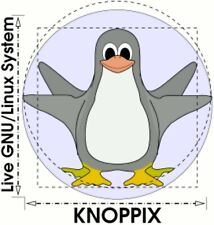
Knoppix Live GNU Linux System 9.1 on Bootable CD / DVD / USB Flash Drive
$9.99
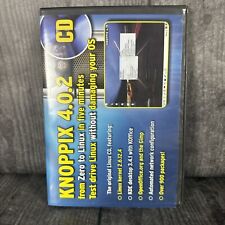
Linux Knoppix 4.0.2 Installation Disc
$39.99
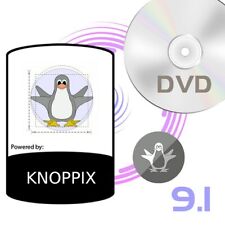
KNOPPIX 9.1 LINUX INSTALL & LIVE DVD
$9.99
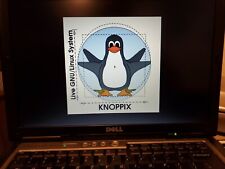
Knoppix Linux Bootable OS v8.6 "Original Live Operating System" 32G USB Stick
$20.30

Acer Aspire One 9 inch Netbook ZG5 512MB RAM 8GB SSD HD Knoppix Linux WiFi VGA
$79.99

Knoppix Linux Bootable OS v8.6 "Original Live Operating System" 16G USB Stick
$19.95



 Reply With Quote
Reply With Quote







